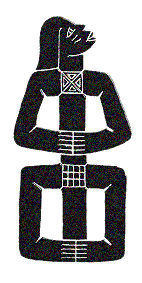By Patricia Lefevre
Few of the 4500 ecumenical enthusiasts at Harare can boast of attending five or more WCC
assemblies. But one American, United Methodist the Rev. Dr J. Robert Nelson, of Houston,
Texas, has amassed thousands of "frequent flyer knots" on the ecumenical boat.
This is his eighth assembly.
Nelson jokes that as a small boy his mother took him to the first Faith and Order
conference in Lausanne in 1927. But, at 78, he admitted to being "too young" to
have been ‘in utero’ at the 1910 Edinburgh world missionary conference where the
ecumenical ship was launched.
Curiosity about the formation of a World Council of Churches drew Nelson to Amsterdam in
1948 where he and his wife, Pat, found the streets and canals decorated with Dutch flags.
How grand that the Netherlanders were so welcoming to the churches, he thought, until he
learned that the city still bore the bunting of Queen Juliana's coronation.
Nelson had come to Europe in 1947 to study for a year at the University of Zurich, having
graduated from Yale Divinity School in 1944. But the wealth of theologians he met at
Amsterdam and the high level of debate on the subject of "the universal church and
God's design" convinced him to stay longer in Switzerland and complete his doctorate
on the nature of the church.
"My whole career was one lucky break after another," Nelson noted. In Geneva he
got a taste of the ecumenical debate and a warm welcome from the WCC's first general
secretary. Soon he went to Tubingen to read more theology in German, then to London where
he met Anglican theologians Oliver Thomkins and Leonard Hodgson.
"I wrote my entire dissertation in the British Museum Reading Room," Nelson
said, adding that Protestant theologian Emil Brunner, who had taken a deep interest in his
research, added a preface when Nelson turned the thesis into a book.
When he returned to America to pursue a chaplancy with the Wesley Foundation, he got a
letter from Thomkins hinting at a job at the WCC.
He took up the post of secretary of the Faith and Order Commission and moved his family to
Geneva following the 1952 third world conference on Faith and Order in Lund, Sweden.
"I was so flattered that I forgot to ask what the salary was during the
interview," he said.
Nelson went to Evanston in 1954 as secreatary and continued in Geneva until 1959.
The United Methodist Church named him a delegate to the WCC's next three assemblies: New
Delhi (1961), Uppsala (1968) and Nairobi (1975).
New Delhi remains the greatest assembly for Nelson. It saw the reception of the Orthodox
churches into the council and the attendance of the first official Roman Catholic
observers -- although two priests had come to Evanstan incognito.
That assembly also produced the New Delhi statement on unity, drafted by Bishop Lesslie
Newbigin, of the Church of South India. It comprised the first major effort since the 1950
Toronto statement to deal with the nature of the church.
While Nelson would attend Vancouver (1983), Canberra (1991) and now Harare as a visitor,
he has never forgotten the excitment of New Delhi.
There, he said, the "essentials of church unity were laid out in wholly Scriptural
terms. There was great enthusiasm in the assembly" and agreement on revising the
basis of the council to contain the Trinitarian reference proposed by the Eastern
Orthodox, he said.
It is no surprise that Nelson finds the Common Understanding and Vision (CUV) statement
being debated at Harare to be an idea whose time has come. Noting that "it's a
working document, not a dogmatic paper", he said the WCC has to continue the dialogue
with full respect to all the participants.
Sunday's debate during the CUV plenary, which showcased tensions between the Orthodox and
Protestant members of the WCC as well as their joint longing for unity, is nothing new to
Nelson.
Much of the "problem" stems from the fact that "many Protestant clergy
don't know what the church is", he said, and the fact that the Orthodox are not
prepared "to modify anything in their holy, God-given tradition" -- even though
the Orthodox Church in America was breaking away from its Byzantine origins.
Such a stance may leave one to conclude -- as did Lutheran theologian Jaroslav Pelikan
years ago -- that "tradition is the living faith of dead persons and traditionalism
is the dead faith of living persons."
But like Reinholdt Niebuhr, Nelson calls himself "an optimist without illusion and a
pessimist without despair" when it comes to Christ's call to oneness. "The
visible unity of the church is attainable," he said. "It's not a solution, but
an indispensible hope."
Back to top



